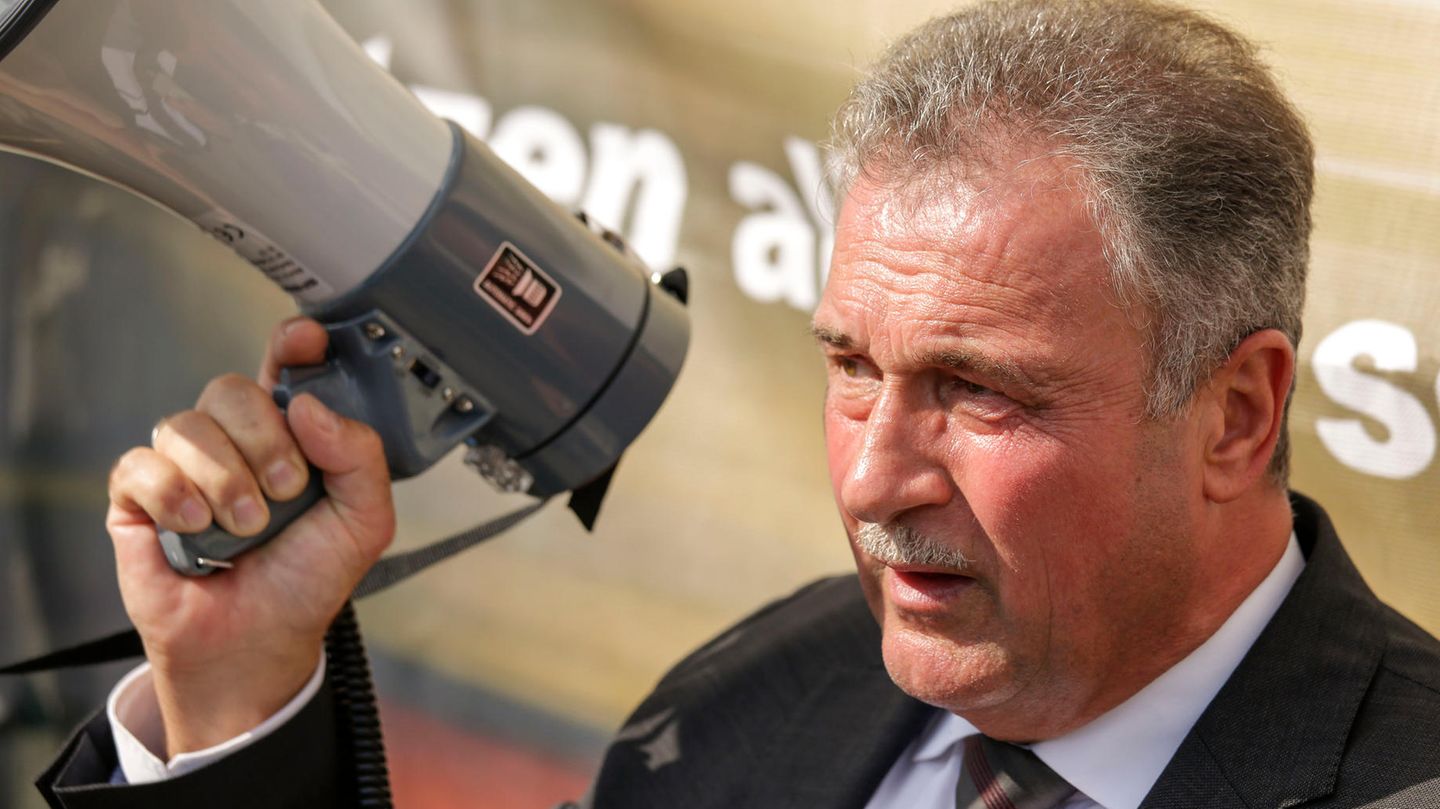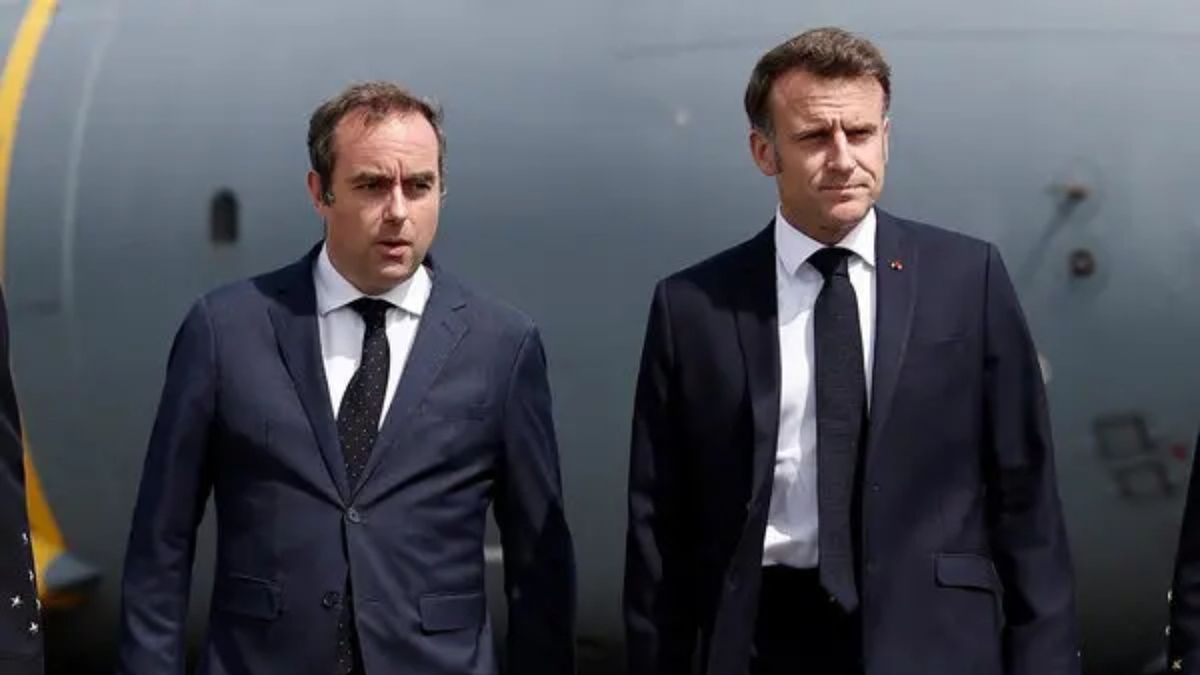The last time Claus Weselsky sent “his” train drivers into the labor dispute, Germany groaned, but he was successful. So why not escalate the rail strikes again? The GDL boss can withstand the pressure of an entire country.
If the phrase “a lot of enemy, a lot of honor” were to apply, Claus Weselsky’s chest would burst with pride. Sometimes, it is said, she does that too, which in turn can be read from the epithets that the press has given him over the years: “Great trainers” (“picture”), “Einheizer aus Sachsen” (” Financial Times Deutschland “),” Man with a flair for steel “(” “). The opponents of Weselsky, head of the train drivers’ union GDL, are not only on the board of Deutsche Bahn, but also on the trains. So they roll and don’t stand still because of the nationwide strikes, of which he is once again the face.
Most Germans don’t want a strike
More than half of Germans, 56 percent to be precise, reject the work stoppage, just a third consider it appropriate – these are actually not uplifting figures for a trade unionist who cannot completely ignore the opinion of the public. But the 62-year-old has already withstood the pressure of an entire country. In 2014 and 2015, the GDL and the railway argued about a new collective agreement. The train drivers had struck nine times, paralyzing large parts of the railroad traffic. In the end there was arbitration, in which many of the demands of Weselsky and his train drivers were met.
Weselsky’s tough course was, however, controversial within the union. Because his predecessor Manfred Schell had publicly criticized him for this, he had to leave – officially because of controversial contribution arrears and “behavior that was harmful to the union”. Schell was not the only functionary who had to leave the boardroom during Weselsky’s tenure. Presumably the internal quarrels should not have damaged his reputation as a tough dog. Now, a few years later, the GDL boss is escalating again and criticism is raining again:
- Bahn spokesman Achim Stauß said about the GDL’s rejection of the offer of a “Corona preamble”: “The GDL is about a political fight and not about a solution at the negotiating table.” Its tip causes damage, “regardless of the passengers, regardless of the majority of our employees and regardless of the DB company. That is irresponsible.”
- SPD health expert Karl Lauterbach shows understanding for the industrial action in general, but please not now during the corona pandemic. “This strike comes at an inopportune time. We are at the beginning of a brilliant fourth wave that is particularly endangering our children and their parents,” he said.
- Federal Transport Minister Andreas Scheuer (CSU) once again calls on both sides to resume talks. He hoped “that the strikers and those in conflict will come back to the negotiating table through renewed offers from Deutsche Bahn,” he said in the RTL / ntv program “Frühstart”. “We are preparing everything to accompany this,” continued Scheuer.
- Even an employee representative colleague cannot take much advantage of the strikes. Reiner Hoffmann, chairman of the German Trade Union Confederation, said that solutions would be fought at the negotiating table, and Weselsky should return there. Hoffmann believes that behind the conflict are not so much the interests of the railroad employees, but the survivability of the GDL. “The GDL has few or no members in most of the railroad sectors – here Weselsky has no mandate and therefore no legitimation” for a labor dispute.
Is there more to Weselsky than money?
In fact, this accusation can be heard again and again: That the GDL boss is actually about the competition with the much larger rival railway and transport union (EVG). That in turn is a member of the DGB, while the GDL belongs to the German Association of Officials. It’s not just about vanity. Weselsky sees his influence on the railways at risk through the so-called unified tariff law. Because the regulation provides that in a company with two competing trade unions only the collective agreements of the employee representatives with more members apply – that would be those of the EVG.
In order to determine how many members the trade unions have, a notarial procedure was initiated, in which the GDL was not involved. As a result, the railway made “reasonable assumptions” about the respective number of members, based on the results of works council elections, among other things. Accordingly, the GDL only has a majority in the workforce in 16 of the 300 railway companies. The union had acted against this determination with urgent motions, but so far has not been won. The Berlin Labor Court will hear about it in September.
As for the matter itself, the DB and the GDL are not particularly far apart. There is agreement about the wage increase, which should be 3.2 percent. However, the railway wants a longer tariff term than the 28 months required by Weselsky. In addition, every employee should receive a corona bonus of 600 euros. The company’s board of directors has promised such a bonus, but without naming a sum. “I send my people on the trains to then find out that the offer for a corona bonus is one? That is canceled,” said the GDL boss.
What is mentioned less often in this context: The competition from the EVG had a “most favored nation clause” written for them when they concluded their collective bargaining agreement with the Deutsche Bahn. That means: If the GDL negotiates better conditions, then the agreement with the EVG must be improved accordingly. The head of the civil servants’ association associated with the GDL, Ulrich Silberbach, said: “The EVG makes it easy and lets the GDL enforce a tariff increase, from which it then benefits because it relies on the most-favored-nation clause.” That also explains the “great anger” in the ranks of the train drivers.
Sources: DPA, AFP, “”, “Financial Times Deutschland”, “Neue Zürcher Zeitung”,, “”,
Jane Stock is a technology author, who has written for 24 Hours World. She writes about the latest in technology news and trends, and is always on the lookout for new and innovative ways to improve his audience’s experience.




